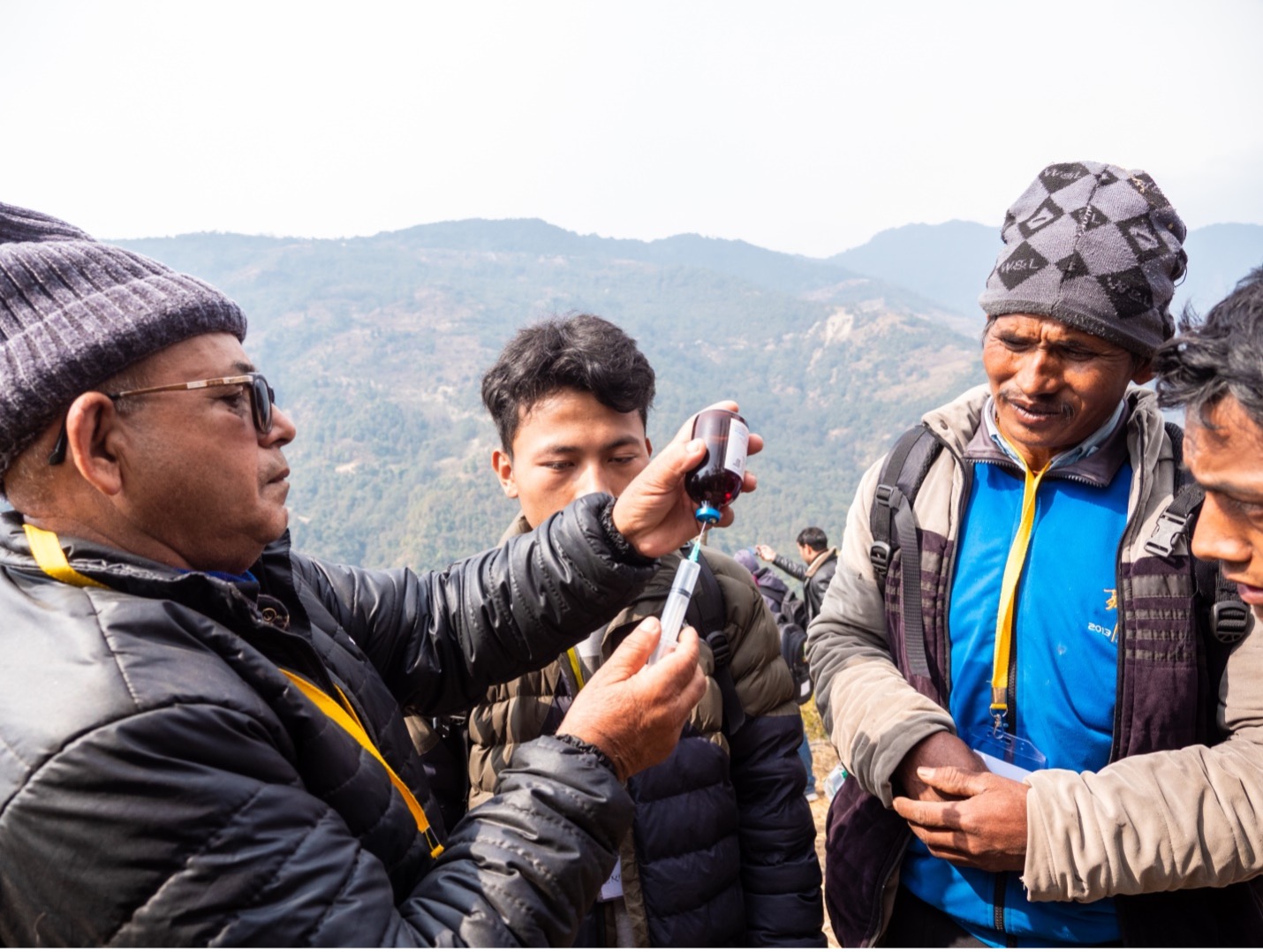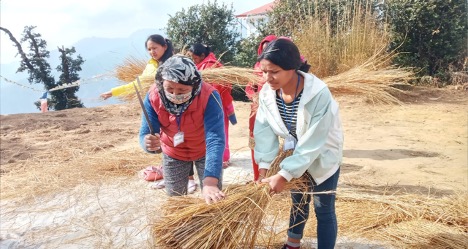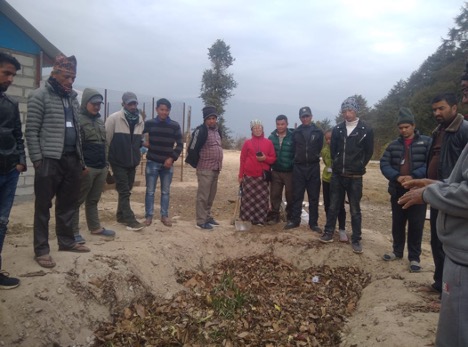Yes, they need to be vaccinated. The goats. Not against corona. But against internal and external vermin.
‘Many of our goats would still be alive if we had known what we know today’. These are the words of Chandra Prasad, one of 24 young people in Helambu who have been trained in goat rearing.
Goat farming is one of six courses for young people in Helambu that CICED’s partner Just Nepal Foundation has just completed as part of the ‘Youth Taking Their Place’ project.
‘And it’s a great idea to have goat farming in Helambu,’ says Suresh Regmi, who leads the course. ‘There is still a lot of grazing land available in the area and Kathmandu is not far away, so there are plenty of customers nearby’.
Goat meat is very popular in Nepal and is also a sought-after food in many festive meals. According to figures from the Nepalese Ministry of Agriculture, each Nepalese eats an average of 11 kg of goat meat per year.
Back in 2017, 90% of all goat meat was imported from India, but various restrictions on imports from the southern neighbor have made goat farming a good occupation for Nepalese with access to grazing land.
JUST Nepal and the project is focused on sustainable production. That’s why goat farming in Helambu is also about making the best use of local resources. For supplementary feed. For the construction of stables and enclosures.
‘Previously, we had no idea how to use local materials. At the same time, we can also take care of basic vaccinations and keep our animals healthy,’ says Pasang Hyolmo Lama.

The same principles are repeated in another course on raising chickens. Here too, 24 young people are soaking up new knowledge about healthy and local feed, sustainable farming and efficient market sales. Chickens and eggs, like goat meat, are proteins with a relatively low carbon footprint, while the demand for white meat is also increasing in Nepal.
Stems of straw
But it’s not just animal production that the young people of Helambu want to make a living from. Three courses – also with 24 participants each – focus on the production of mushrooms in strawlogs, which perhaps best translates to straw strains, growing vegetables and breeding kiwi fruit.
The Strawlog method of growing mushrooms has become very popular in Nepal. It doesn’t require large investments or huge areas of land. Timely care in the preparation and maintenance of strawlogs and the right harvesting technique can quickly generate the first income for young farmers.
Watch the students’ own video on preparing strawlogs for mushroom production
The same goes for the cultivation of the kiwi fruit, which, despite its New Zealand roots, originates from areas not too far from Helambu. The fruit is also known as the ‘Chinese gooseberry’ and is at home at altitude in Nepalese latitudes. Kiwifruit cultivation has a long history elsewhere in Nepal, but it is relatively new to Helambu. Like the other products in focus at the courses, kiwifruit is enjoying increasing demand.
Five years after the kiwi tree is planted, the first fruits can be picked. It is estimated that once the kiwi harvest is in full swing, the good kiwi farmer can earn around DKK 6,500 per 500 m2 of cultivated land compared to the mere DKK 350 that the rice farmer earns on a plot of land of the same size.
On the other hand, kiwifruit production is a costly start-up and there are plenty of risks around the corner. A heavy hailstorm can ruin this year’s harvest, and you need to keep a close eye on various plant diseases. That’s why technical and professional help is crucial to the success of kiwifruit production.
With support from the JUST Nepal Foundation, the youth of Helambu have come together to form Nepal’s first inclusive youth cooperative. Through cooperation and coordination, the cooperative aims to give all participants greater knowledge and more muscle for production and marketing. Entrepreneurship should be sustainable.











